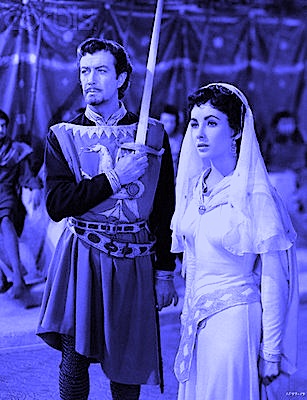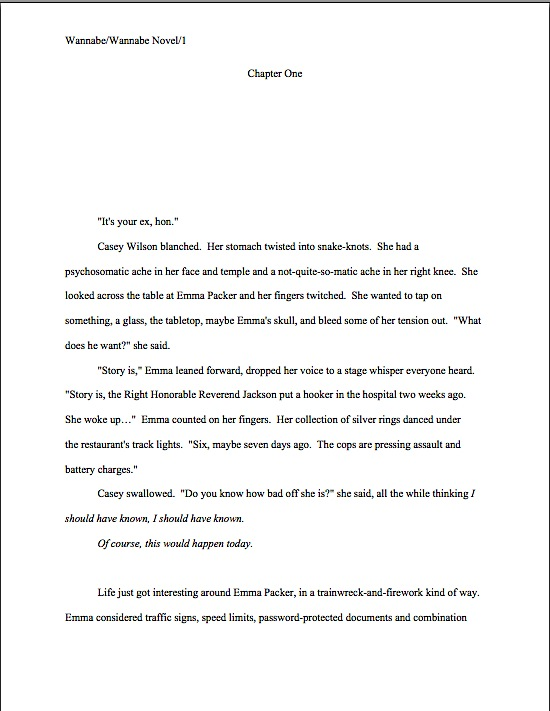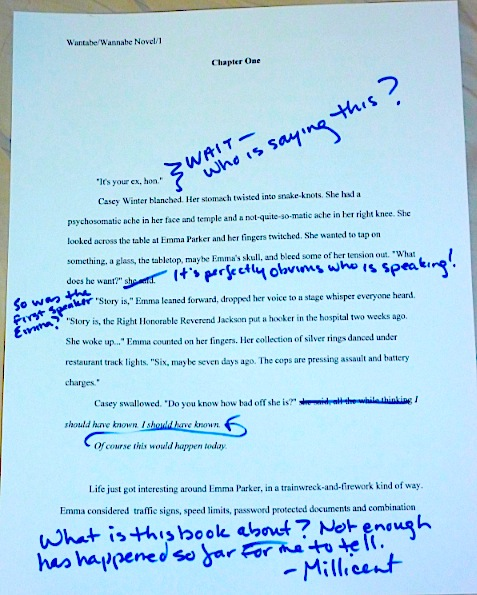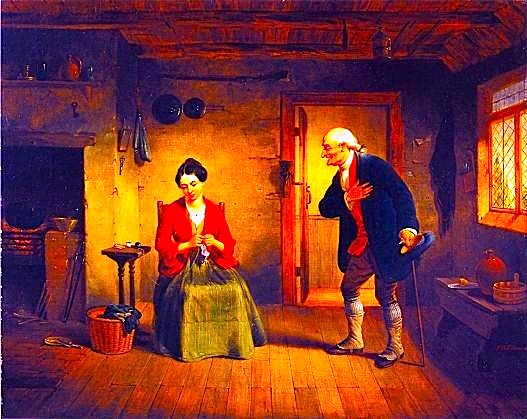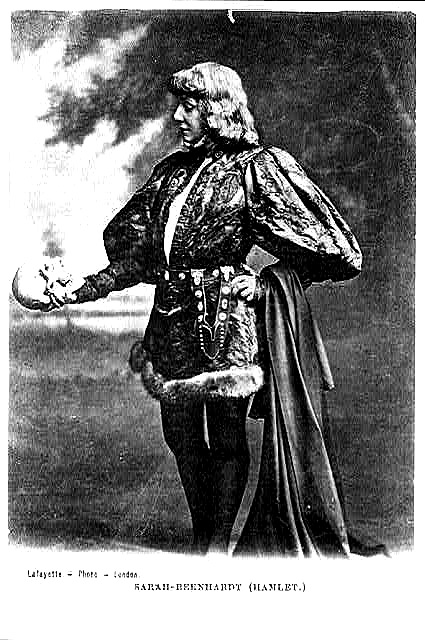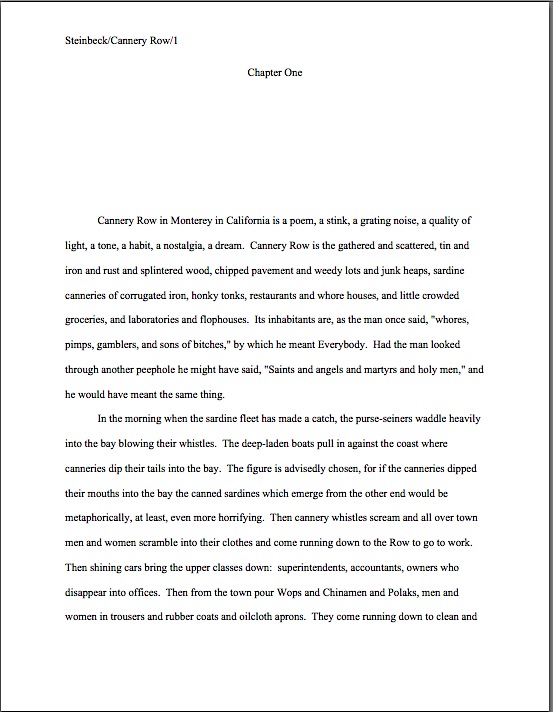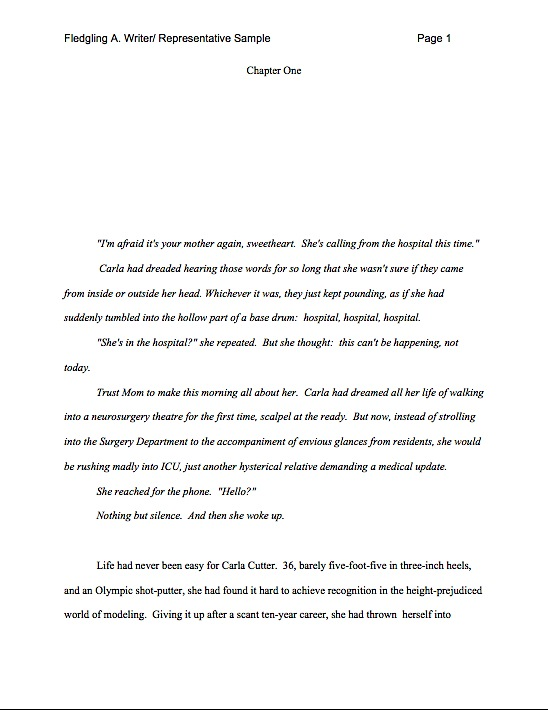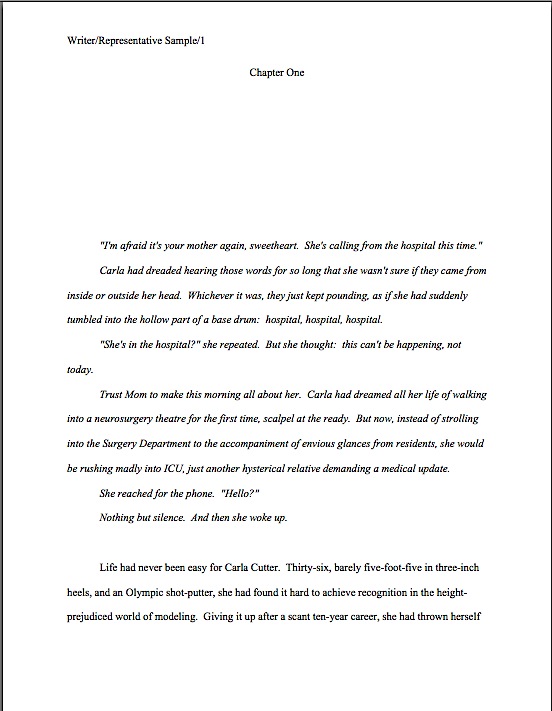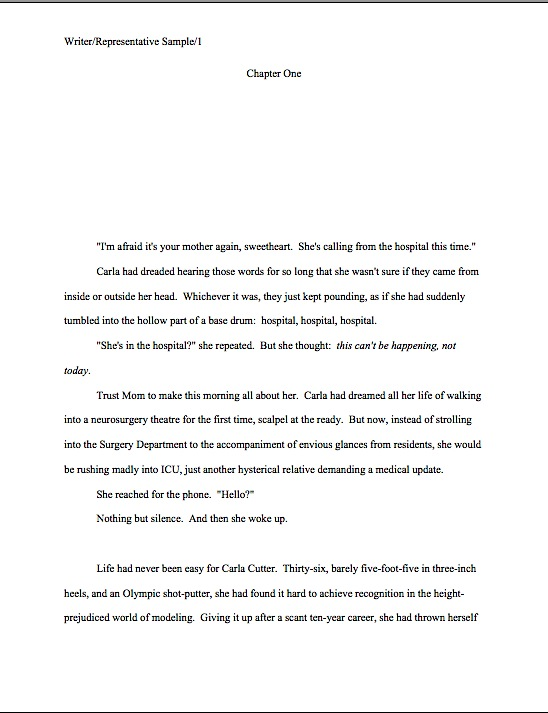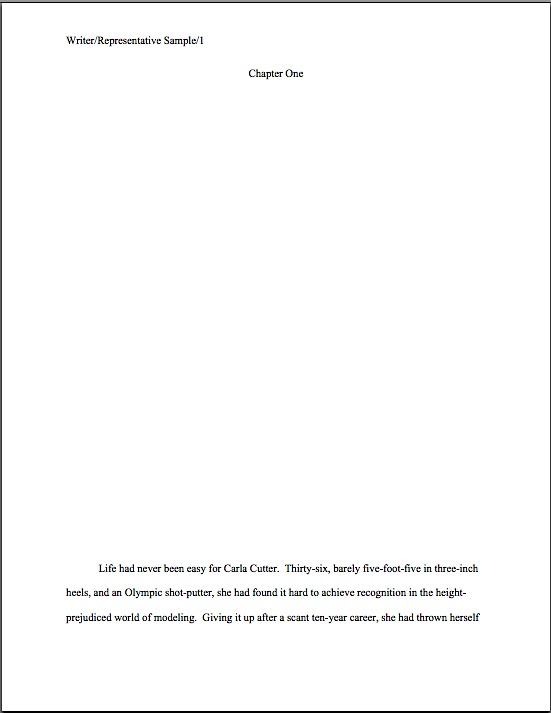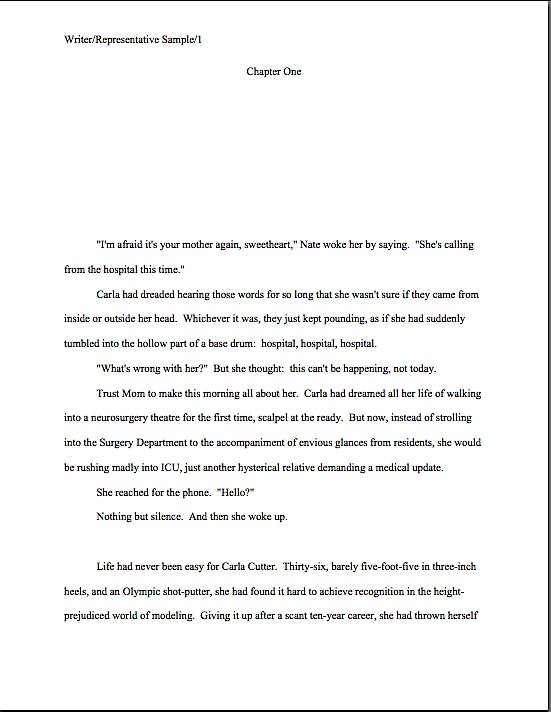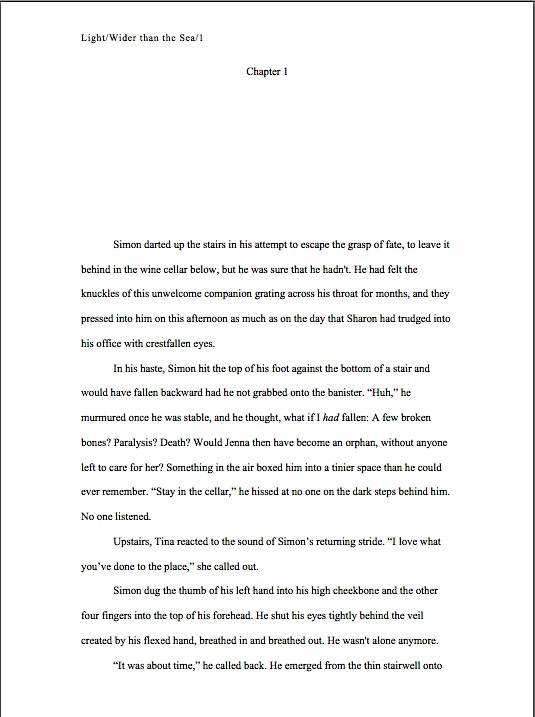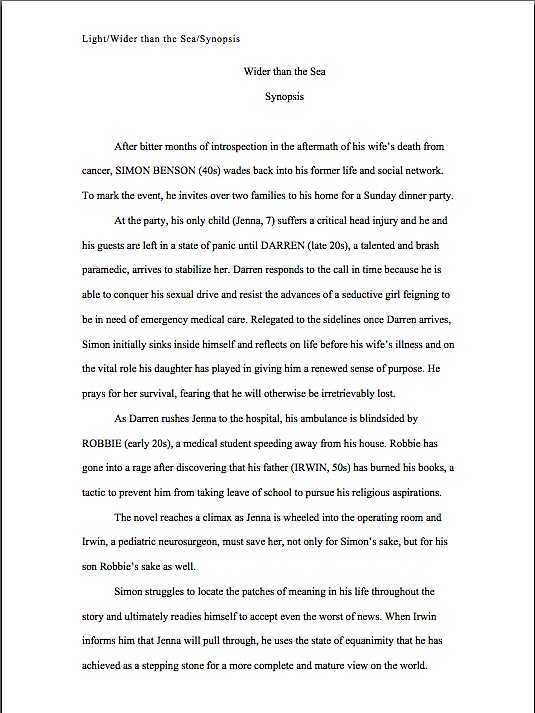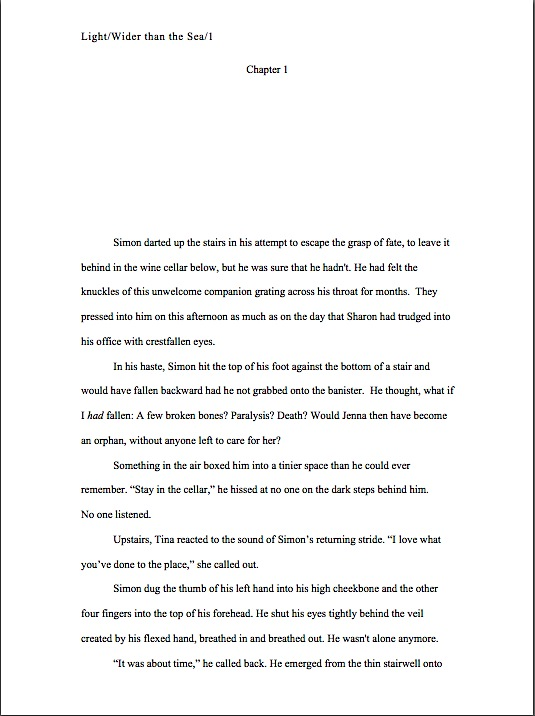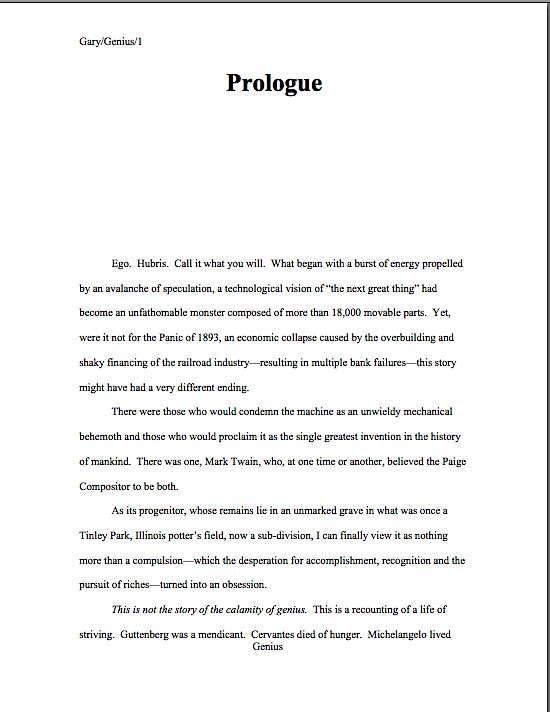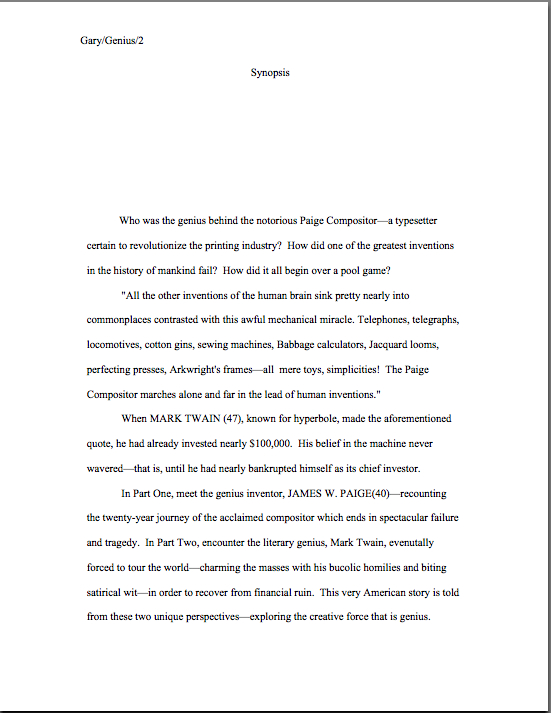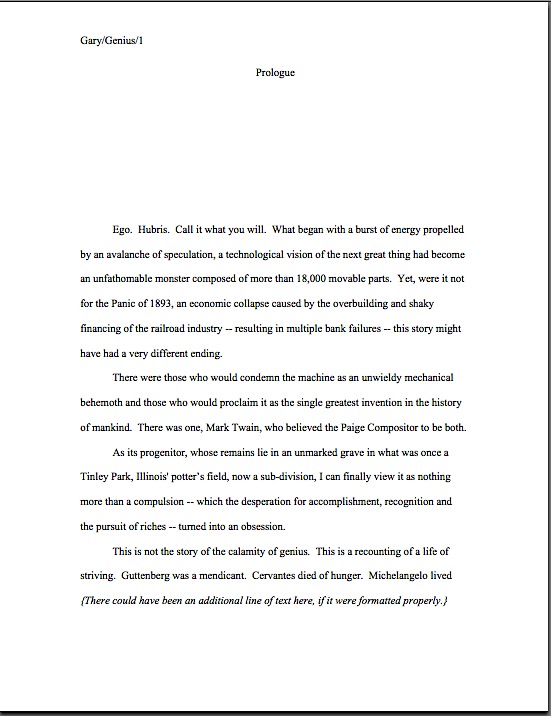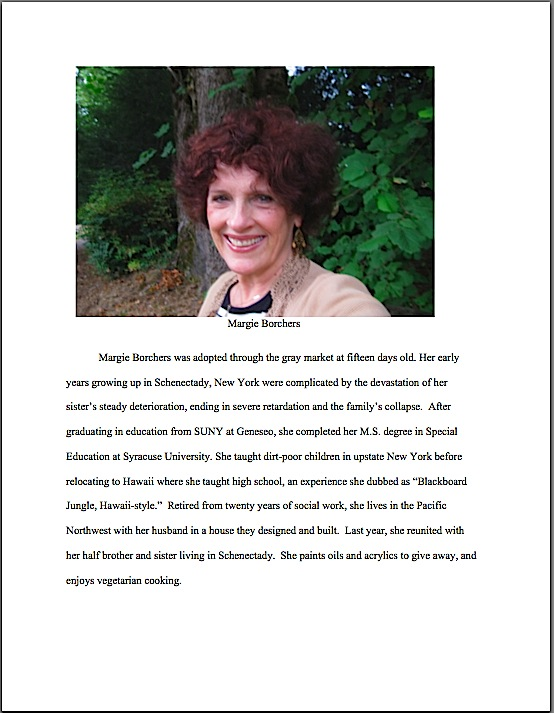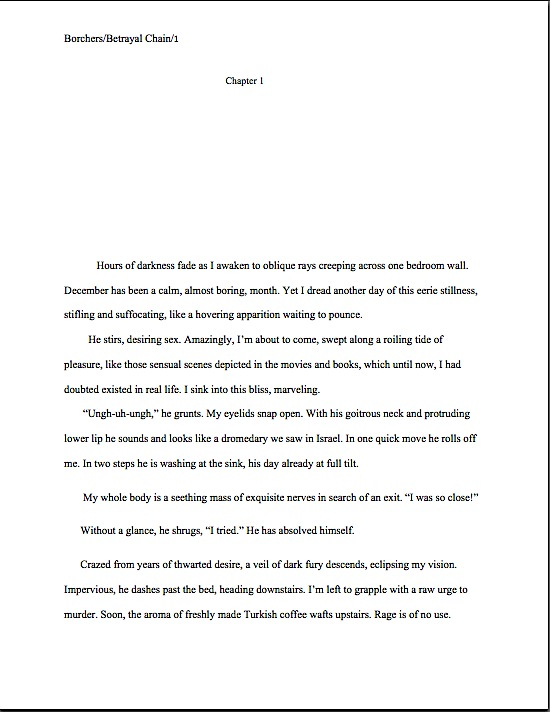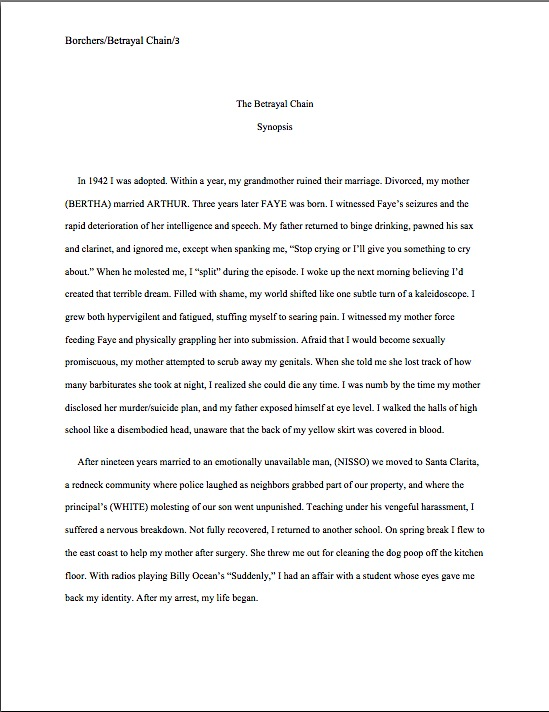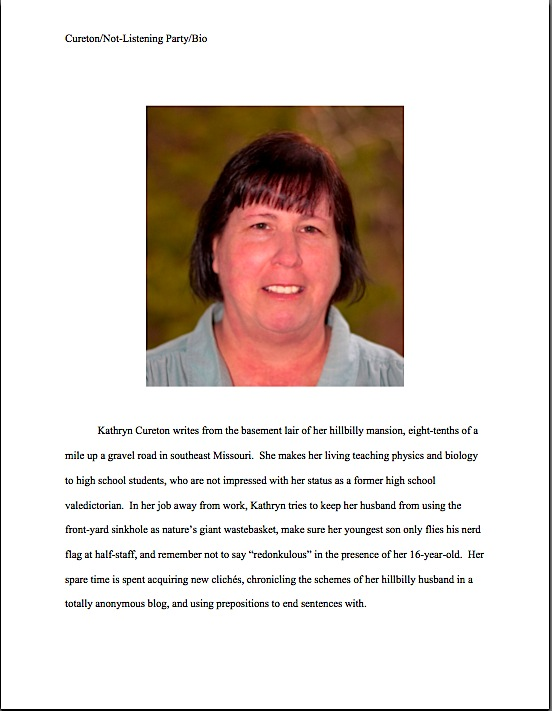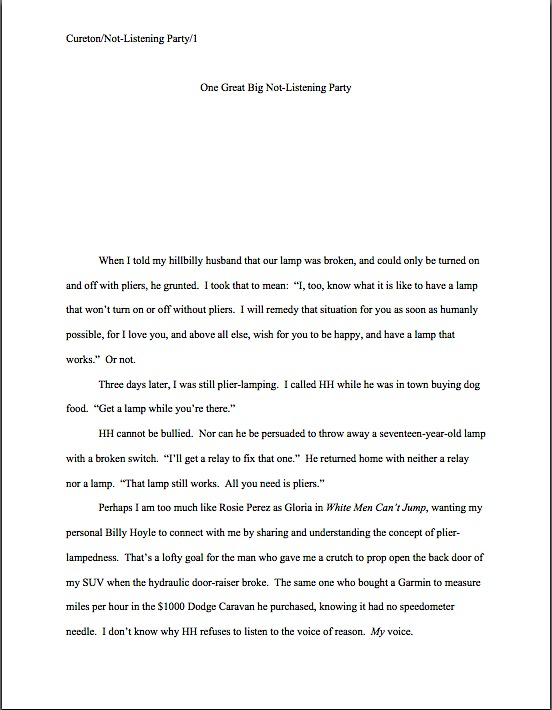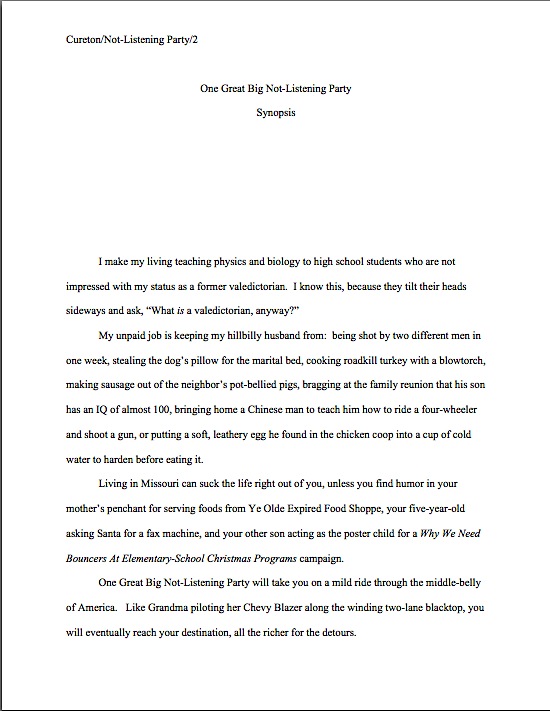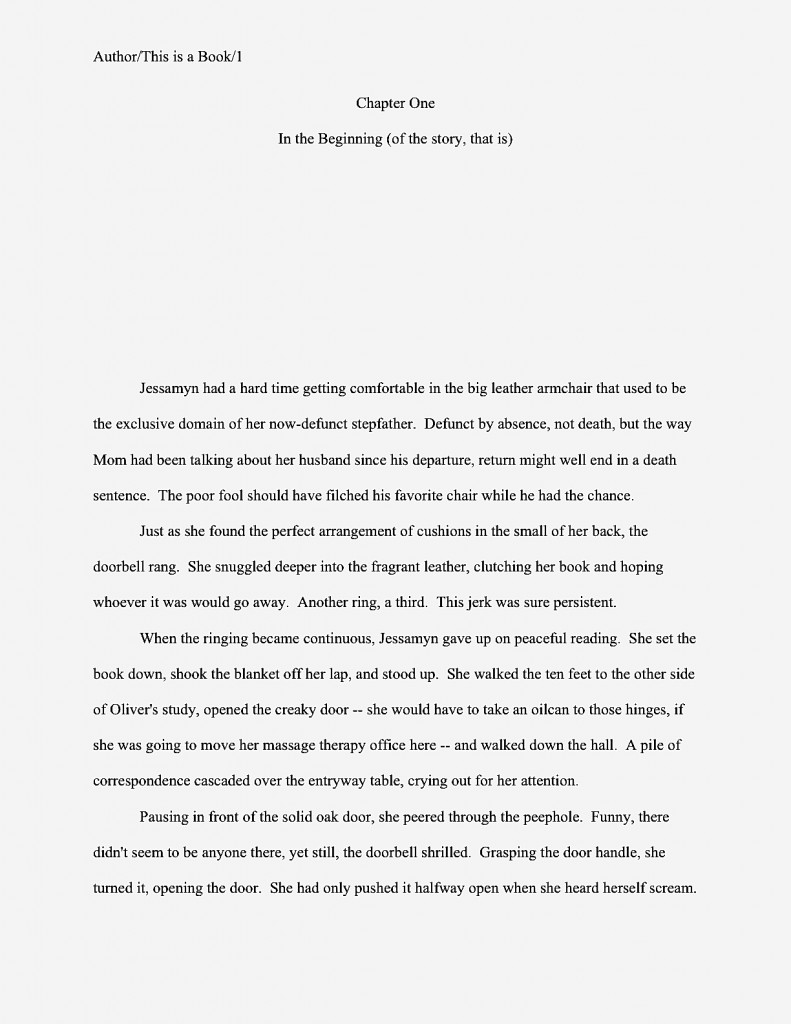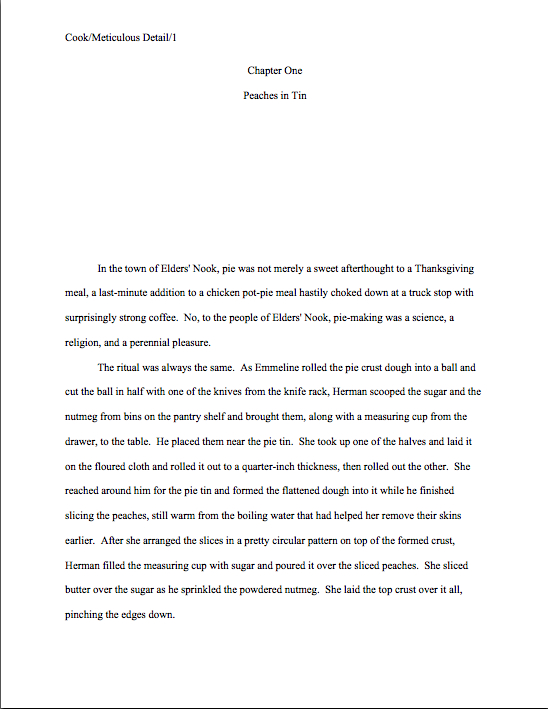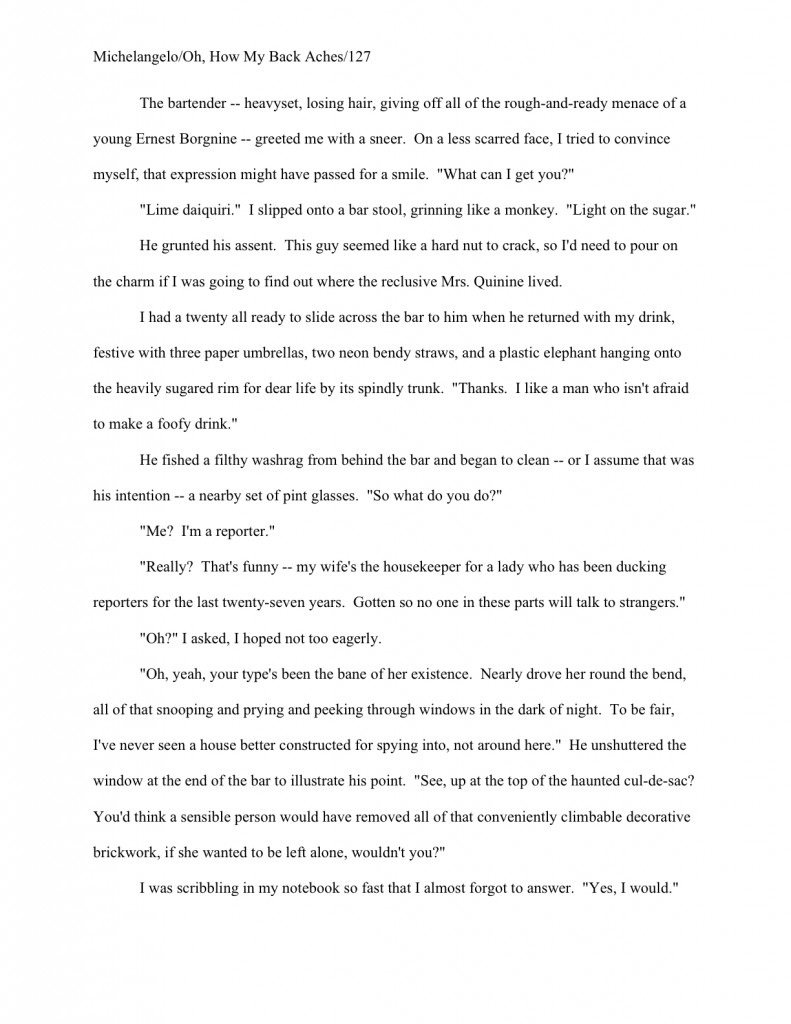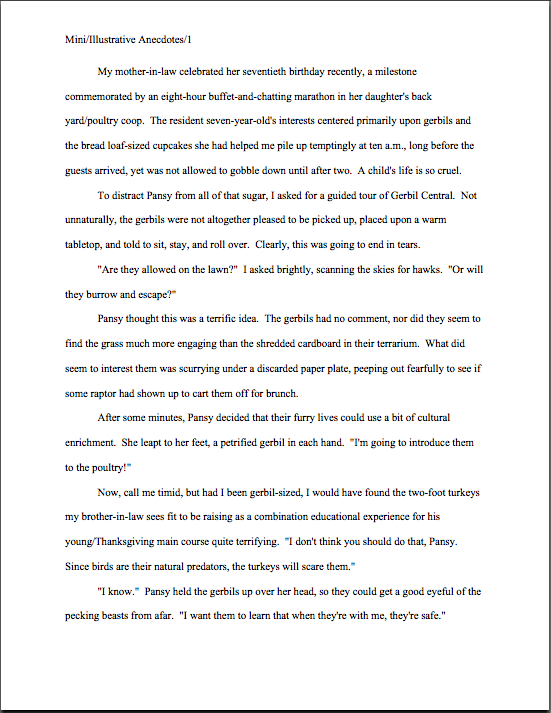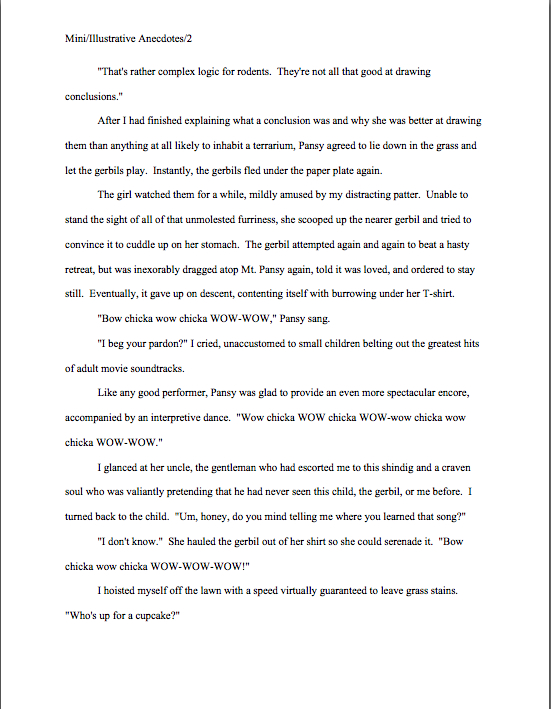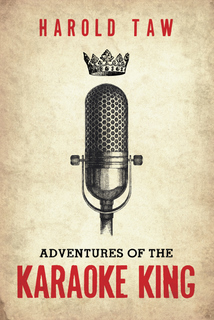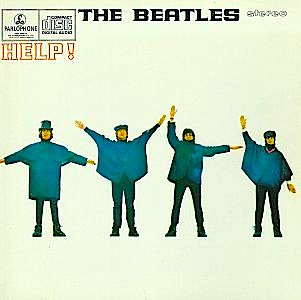Hello, campers –
As those of you who have been hanging around the Author! Author! community for a while are, I hope, aware, I seldom rerun a former post wholesale. Oh, I’m not above taking an old post, dressing it in a new gown, switching out some jewelry, and sending onto the runway again, blinking at the bright lights, but it’s rare that I don’t add at least 5 or 6 pages of new material.
Today, I’m bringing you a post from last year’s Frankenstein manuscript series. It’s quite apt for our ongoing discussion of perennial professional readers’ pet peeves, but perhaps equally important today, I can post it with a minimum of keyboard time. I took a tumble earlier today, and I’m under doctors’ orders to take it easy.
This is as easy as I ever take it, apparently: I punched up today’s version only minimally. Enjoy!
Have you noticed a running pattern in the last week or two of posts on self-editing, campers? Have you dimly sensed that no matter where my suggestion du jour may begin, my narratives always end up taking a scenic detour through the joys of keeping the pacing tight in your manuscript? Has your significant other been shaking you awake, demanding that you cease muttering, “But does it have conflict on every page? EVERY page?” over and over again in the night? Have you found yourself clapping your hands loudly in boring work meetings, exclaiming, “Where’s the tension? Let’s get things moving here, people!” At family gatherings? At church? While waiting in line to vote?
Glad to hear it. My subtle indoctrination technique is working!
In case I haven’t yet dumped enough cold water on those of you intending to submit your writing to professional scrutiny any time in the foreseeable future: manuscripts or book proposal that drag their feet even a little tend to get rejected. Especially, as we discussed yesterday, those that meander within the first few pages. And while we’ve all read dozens of published books that have rocked us gently to sleep by page 4, and it truly isn’t fair that your manuscript is being held to a higher standard than THOSE evidently were, sitting around resenting the differential isn’t going to help you get your work published so effectively as making sure that YOUR manuscript is as tight as a drum.
I’m aware that the very notion makes half of you want to curl up into a protective ball around your manuscript, whimpering, “NO! You can’t cut ANY of it!” I know perfectly well that many, if not most, aspiring writers beard the heavens with bootless cries against the strange reality dictating that a manuscript should be publication-ready before it has an agent, who will probably ask the writer to change it significantly before sending it out to editors, anyway. I am even fully cognizant of the fact that from a writerly perspective, we love your writing — give us less of it doesn’t make much sense at all.
Yet a sober recognition of the extreme competitiveness of the literary market and the ability to self-edit in order to render one’s work more marketable within its ever-changing landscape are species characteristics of the professional working writer; while it’s not completely unheard-of for a first draft to be what ends up on the published page, by and large, producing a book-length manuscript purely from inspiration, without revision or even close subsequent reads by the author prior to an editor’s involvement, is roughly as rare amongst the successful author population as qualifying for the Olympics is amongst the world population.
I know you have it in you to approach this like a pro. Let’s talk conflict.
As I may have mentioned once or twice throughout this series, it’s an industry truism that a novel should have conflict — or still better, tension — on every page. While anybody who has had a half-hour conversation with me about the current state of the industry knows that I feel this standard should not be applied arbitrarily to every book in every genre, you should be aware of this axiom — because, I assure you, every agency screener is. In my ruminations on the subject, the word arbitrary tends to come up, as do the phrases knee-jerk reaction, radical oversimplification of a complex array of literary factors, and power run mad. I’ve been known to question whether, for instance, BREAKFAST AT TIFFANY’S, CATCH-22, or OF HUMAN BONDAGE could find a publisher today as new books, much less an agent.
Or, indeed, virtually any of the bestsellers of the 18th or 19th centuries. Don’t believe me? Okay, here is the opening page of the absolutely last word in exciting dramatic novels in 1819, IVANHOE:
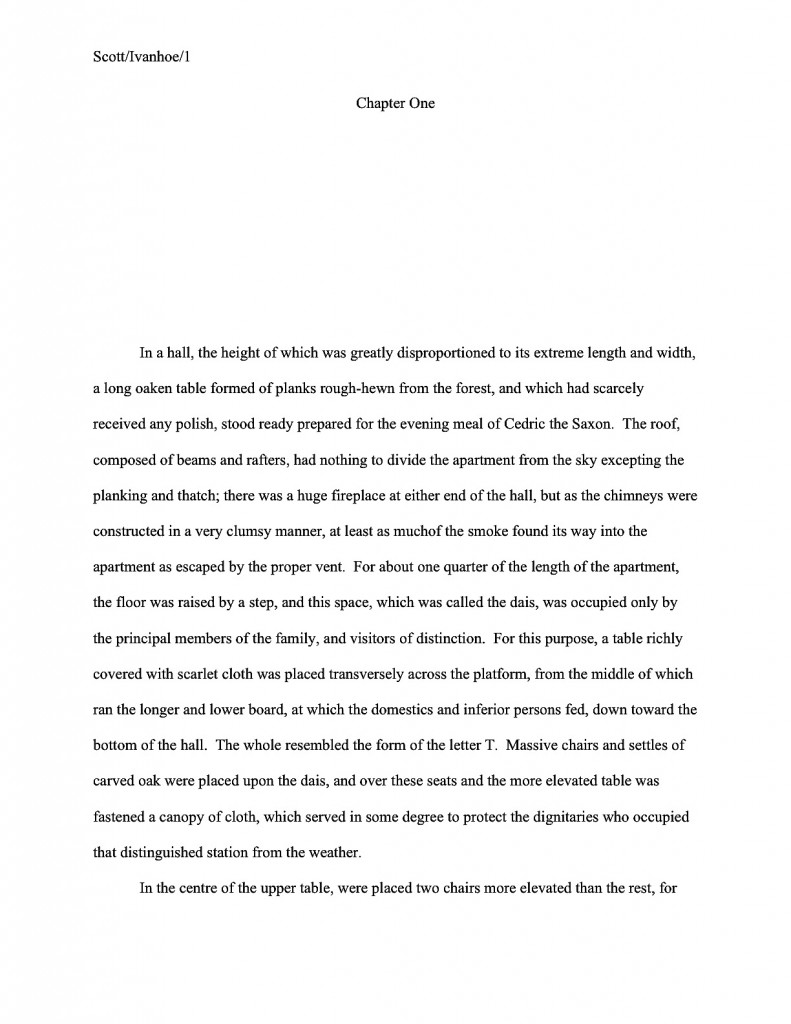
“What is this?” a modern-day Millicent mutters under her breath, reading for the SASE that, being a conscientious submitter, Sir Walter Scott had included with his submission. “A book about furniture? A manual on room decor? Where is the conflict? And what’s the deal with the punctuation? Next!”
But that’s rich array of rejection reasons would not be what Sir Walter would hear, right? No, his only clue about why his submission was rejected would be this:
Dear Scott:
I read your submission with great interest, but I’m afraid your manuscript does not meet our needs at this time. I just didn’t fall in love with the story.
Another agent may well feel differently, and I wish you every success finding a home for this book.
Sincerely,
Millicent’s boss
Great Big Agency
I’m making light of it, but honestly, I have sat up many a midnight, worrying about all of the talented aspiring writers out there currently relying upon, say, Charles Dickens or Jane Austen as pacing role models, only to have their hearts broken by rejection by agents, editors, and contest judges who, rationally enough, base their assessments about whether a book is marketable upon what has been selling within the last five years, rather than upon the kind of abstract notion of Good Literature that most of us encountered in our English classes. To say nothing of writers who chose as their lodestar books released a decade ago, or even, in some especially fast-changing genres, just a few years back.
If you doubt that, I invite you to round up all of the agents who were trawling writers’ conferences for chick lit in, say, 2002, at the height of the post-BRIDGET JONES enthusiasm, and ask them whether they still rabidly seeking chick lit today. Those genuinely enamored of the genre have stuck with it, of course, but a good two-thirds of them subsequently spent a couple of years pursing the next big YA vampire classic. (2011 Anne here: or are currently as busy tumbling over backwards to avoid being affiliated with the next THREE CUPS OF TEA as they were a year ago trying to find it.)
My point is, publishing is driven as much by fads as by an appreciation for the beauty of a well-crafted sentence; in the mid-1980s, for instance, a novel’s being over 100,000 words was considered completely acceptable. Yet interestingly, the truism about conflict on every page has endured for a couple of decades now. There are plenty of agents and editors out there, and good ones, who do apply this standard to submissions, so you’re better off if you think about the pacing issue before you send your baby out the door, rather than later puzzling over a form-letter rejection, wondering if the pacing could possibly have been the problem.
Much of the time, it is. So much so that I feel a checklist coming on:
(1) If you’re editing for length, seeking out comparatively slow bits to shorten — or, dare I say it, cut altogether — should be at the top of your to-do list.
Actually, a search-and-minimize technique isn’t a bad idea even if length isn’t your particular bugbear, either, but it’s absolutely essential when editing for length.
What should go in the place of the trimmed bits? Conflict, of course.
(2) If you want to keep a slow scene, ramp up the conflict within it.
“But Anne,” those of you who write introspective books cry, “what can I do if my plot is, in fact, rather sedate? I can hardly make the supermarket down the block spontaneously combust in order to add spice to my domestic drama, can I? It would look so odd.”
This is a good question, and prompts me to ask another: what does tension on every page mean?
Should every character be fighting with every other constantly? Do you have to show things exploding at least once every 33 lines? Should the librarian in Chapter 2 pull a switchblade on your protagonist when he tries to check out a book on gardening?
No, on all counts. But how about these tension-increasers?
Some character could want something and not get it on every page, right, without gunpowder being involved.
A character could say one thing and do another.
Every conversation could contain some seed of disagreement.
That’s all realistic, isn’t it? After all, no two human beings are ever in absolute agreement on every point. At least no two I have ever known.
(3) Consider having allies disagree, harbor different motivations — or having the protagonist be less sure of her own.
Trust me, your protagonist’s relationship with her best buddy will come across to the reader as stronger– not to mention more true-to-life — if they have the occasional tiff. A person has to care more about a friend to maintain a relationship through a conflict than through periods of sunny agreement.
So make your characters fight a little for their friendships from time to time. They’ll seem more valuable.
Where overt disagreement is not feasible, then how about a differential between what your protagonist is saying and what she is thinking? The protagonist could habitually bite her tongue, while her angry thoughts run rampant. Internal conflict is definitely interesting.
(4) Seek out dialogue-only scenes and inspect them for lack of tension.
I’m talking about ALL scenes where the dialogue is uninterrupted by narrative text for more than, say, half a page. Reach for your manuscript, scan it for dialogue-only scenes, and check to see whether those scenes are sufficiently conflictual to maintain Millicent’s interest. Most of the time, they don’t.
Did I just hear the battle cry of all of those writers out there who were taught since their infancies that dialogue should speak for itself, and that it is inherently bad writing EVER to include a character’s thoughts in the midst of dialogue? Am I about to be on the receiving end of a body blow from those stalwart souls who have doomed readers to two or three pages on end of pure dialogue, devoid of other activity, or even markers of who is speaking when?
Oh, dear. How shall I put this gently?
If you are so gifted a dialogue-writer that you can convey every nuance of a relationship between two characters at a particular moment in time purely through dialogue, do so with my blessings. But honestly, if you have that particular talent, you might want to go into writing stage or screenplays. Novels, I believe, are places to show complex characters with interesting motivations, people who think and act as well as speak.
Personally, if I want to read transcripted conversations, a novel or memoir is not the first place I look. That’s what trial transcripts are for, after all.
I am aware, though, that there are plenty of writers — and writing teachers — out there who would disagree with me. (Look, Ma: conflict on this page!) If you prefer to follow their precepts, fine. But do be aware that it’s hard to maintain a sense of forward motion throughout pages of dialogue-only text, particularly if one of the speakers is a character the reader does not know particularly well.
(5) Consider the dramatic appeal of duplicity.
This is a great way to liven up those dialogue-only scenes. Few of us say everything that is on our minds at any given moment. Anyone who has ever been a teenager being lectured by a parent, for instance, or an employee shouted at by a boss, has direct personal knowledge of a situation where what is said out loud and what is thought is WILDLY different, where reproducing merely the dialogue would not give an accurate picture of what is really going on between these two people.
Almost everyone holds something back when talking to others — out of politeness sometimes, out of fear others, out of strategy, out of love. The struggle to express oneself without giving away the whole candy store is one of the great human problems, isn’t it? So why not let that struggle manifest on the page?
(6) Double-check all dialogue-based scenes for tension.
Is there enough conflict in them? If no emotion is being generated on either side of a discussion, there probably isn’t.
The conflict need not be large; an argument certainly isn’t appropriate to every scene. Are there a couple of small tweaks you could make to increase the tension between these characters, or the tension within the character’s own mind?
(7) Excise dialogue that doesn’t advance the storyline or provide memorable character development.
Is the conversation providing new information, or just rehashing what the reader already knows? If the latter, could the line be cut without the reader losing a sense of what is going on?
You’d be stunned by how often the answer is yes. Remember, repetition bogs down pace considerably. Trim as much of it as possible — yes, even if real-life characters would say precisely what you already have on the page.
(8) Scrutinize fill-in-the-friend scenes for conceptual redundancy.
Pay particular attention to scenes where the protagonist is telling another character what just happened; such dialogue is notoriously redundant. In fact, know a very prominent agent, one who gives classes and writes books to give advice to aspiring writers, who insists that any scene where characters are talking over ANYTHING that has already occurred in the book should be cut outright. However, since he also counsels removing any scene where the protagonist drinks tea, sips coffee, drives anywhere alone, or thinks about what is going on, I’m not sure I would advise taking his admonitions as revealed gospel.
But the next time you find your characters sitting in a coffee shop, chatting about what has happened in the previous scene, you might want to ask yourself: would the reader be able to follow what is going on in the book if this scene were cut?
(9) Check the beginnings of scenes (and chapters) for over-long set-ups.
Heck, check them for extra verbiage in general. The writing is often sparer at the end of a scene or chapter than at the beginning.
Why? Well, writers tend to compose in bursts, lavishing more time and detail upon the opening, hitting a groove in the middle — and rushing to get the rest of the scene on paper before that parent-teacher conference ten minutes hence. Openings also tend to be the most revised portions of text: if a writer comes up with a bon mot down the line, she will often insert it near the beginning of a scene or chapter.
(10) Generally speaking, a manuscript that has ups and downs will be perceived by the reader as more exciting than one that does not.
Consider changing the running order of the scenes. Alternating action scenes with processing scenes, or fast-paced scenes with slower ones, will give more movement to the plot.
(11) Experiment with varied sentence structure.
If you find yourself perplexed about the drooping energy of a scene whose action would seem to dictate tight pacing, try this trick o’ the trade: at exciting moments, make the sentences shorter than at more meditative times in your plot. That way, the rhythm of the punctuation echoes the increased heart rate of your protagonist. Your reader will automatically find himself reading faster — which, in turn, will make the suspense of the scene seem greater.
Good trick, eh? You can perform a similar feat with dialogue, to give the impression of greater underlying hostility between the speakers.
(12) Let the dialogue reflect the speakers’ breathing patterns.
We’ve talked about this one before, right? People breathe less deeply when they are upset; breathing shallowly, they speak in shorter bursts than when they are relaxed. Also, agitated people are more likely to throw the rules of etiquette to the four winds and interrupt others. It is not a time for long speeches.
Dialogue that reflects these two phenomena usually comes across to readers as more exciting than exchanges of hefty chunks of speech. If you are trying to make a dialogue-based scene read faster, try breaking up the individual speeches, providing interruptions; the resulting dialogue will seem more conflict-ridden, even if the actual conversation is not about something inherently conflict-inducing.
Seriously, it works. Consider this tame little piece of dialogue:
“We’re having apple pie for dessert?” Albert asked. “I thought we were having cherry cobbler, the kind I like. The kids would love it; it would mean so much to them. Don’t you remember how much time and energy they put into picking those cherries last summer?”
Janie chuckled ruefully. “I certainly do. I was the one who ended up pitting them all. Even from preserves, though, the cherry cobbler you like takes a terribly long time to make. I never deviate from Aunt Gloria’s pie recipe, the one she learned from that traveling pie pan salesman during the Great Depression. Infusing the cherries with cinnamon alone takes an entire afternoon. I can throw together an apple pie in an hour.”
“And the result is divine, honey, with both: your Aunt Gloria certainly learned her lesson from that salesman well. But I’m sure that the kids would like to see the fruits of their labor, so to speak, show up on the dinner table before they’ve forgotten all about summer picking season.”
“Well,” Janie said, sighing, “you have a point, but I simply don’t have time to make another dessert before the Graysons come over for dinner.”
Not exactly a conflict-fest, is it? Now take a gander at the same scene with Albert and Janie taking shorter breaths — and some editorial rearrangement with an eye toward maximizing conflict. To make it an even higher dive, let’s maintain it as a dialogue-only scene:
“We’re having apple pie for dessert?” Albert asked.
“I simply don’t have time,” Janie replied, “to make another dessert before the Graysons come over for dinner.”
“I thought we were having cherry cobbler, the kind I like.”
“Even from preserves, the cobbler you like takes a long time to make.”
“The kids would love it. Don’t you remember how much time and energy they put into picking those cherries last summer?”
“I certainly do. I was the one who ended up pitting them all.”
“I’m sure the kids would like to see the fruits of their labor show up on the dinner table before they’ve forgotten all about summer picking season.”
Janie sighed. “Look, I never deviate from Aunt Gloria’s Great Depression cherry pie recipe…”
“Yeah, your Aunt Gloria certainly learned something from that traveling pie pan salesman.”
“…And infusing the cherries with cinnamon alone takes an entire afternoon. I can throw together an apple pie in an hour.”
“And the result is divine, honey,” Albert sneered.
Quite a different scene, isn’t it, even though the dialogue is almost identical? Hardly divorce-court material, even now, but now the scene isn’t about pie v. cobbler at all: it’s about clashing expectations within a marriage — and what does Albert have against Aunt Gloria, anyway?
If you really get stumped about where to break the speeches, try running around the block, then coming back and seeing how much of each character’s speech you can say out loud before you have to gasp for breath — thus allowing another party opportunity to speak up.
I swear that this really works.
(13) Consider the possibility that you may be able to convey the necessary tension by showing only part of the scene — or winnowing down a conversation to a quick exchange.
Sometimes, less honestly is more. If the goal is to put tension into this particular scene, do you really need more than the beginning and end of the Janie-Albert exchange?
“We’re having apple pie for dessert?” Albert asked.
“I simply don’t have time,” Janie replied, ‘to make another dessert before the Graysons come over for dinner. Your favorite cobbler takes an entire afternoon of my time, but I can throw together a pie in an hour.”
“And the result is divine, honey,” Albert sneered.
Sufficient, isn’t it? That’s four lines of pure interpersonal conflict that could be dropped into any kitchen conversation between spouses of a certain age.
To coin a phrase, sometimes less is more. Keep up the good work!
